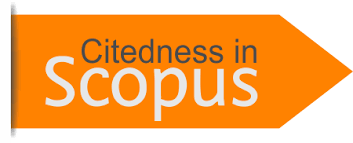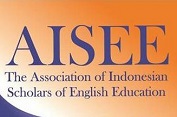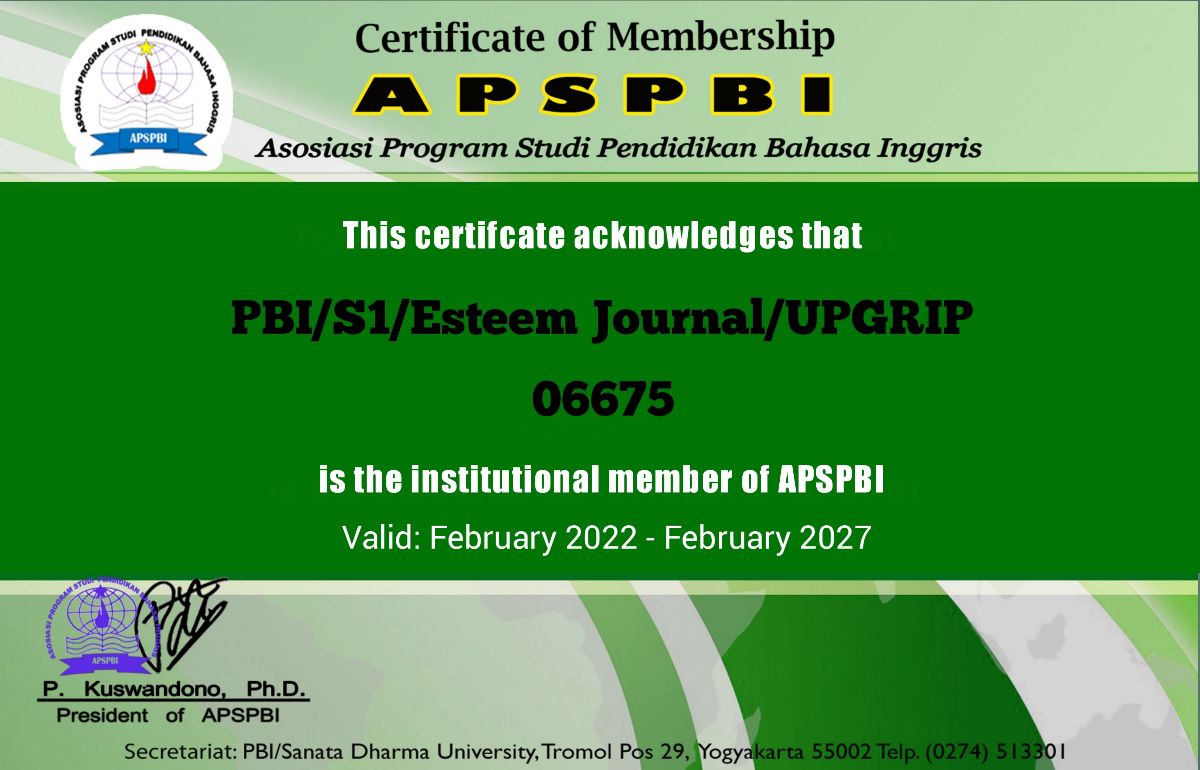A NEED ANALYSIS OF ESP FOR PUBLIC HEALTH STUDENTS
DOI:
https://doi.org/10.31851/esteem.v5i2.8535Keywords:
Needs Analysis, ESP, public health studentsAbstract
This study is aimed at finding out the students' needs in learning English, particularly English for Public Health as part of ESP regarding four language skills and some language areas.This study was a qualitative descriptive study with 150 students of Public Health Department as the subjects. The data were collected by using a questionnaire. A semi-structured questionnaire was distributed to the participants to gather information related to the students' needs and wants.The study analyzes the data from the closed questions by using simple statistics and the open question by using interpretations.The results showed that the students were confidentin their Reading skillsbut not in Grammar, they also perceived that writing skill is the most important skill to learn. For each sub-skill, the students perceived that the most important skills to learn are including understanding vocabulary from the context (reading), writing correct sentences (writing), pronouncing words correctly (speaking), and listening to English media (listening). Related to their wants, the students not only learn English to support their academic field, but also to prepare after graduation.
References
Allen, J. P. B. (1984). General English Syllabus Design. In General purpose language teaching: A variable focus approach.
Amna, S., & Idriani, S. (2019). A Need Analysis Approach In Developing Esp Module Based On Interactive Multimedia For Academy Industrial Technology Padang. https://doi.org/10.4108/eai.19-7-2019.2289528
Asrifan, A., Vargheese, K., T, S., & Amir, M. (2020). ESP course design: The need analysis on tourism department in indonesia vocational high schools. Journal of Advanced English Studies, 3(2), 69–77. Retrieved from http://sastra.unifa.ac.id/journal/index.php/jes/index
Babita, T. (2013). Listening : An Important Skill and Its Various Aspects. The Criterion : An International Journal in English, (12), 1–8. Retrieved from www.the-criterion.com
Barbara, Simaibang, B., & Sari, A. P. (2022). the Influence of Storytelling St Rategy and Learning Motivation Towards the Eleventh Grade Students ’ Listening Ability. ESTEEM JOURNAL OF ENGLISH STUDY PROGRAME, 5(1), 102–109.
Davis, & Tahrun. (2022). The Implementation of Project-Based Learning in Increasing Speaking Achievement and Self-Confidence of Eleventh Grade Students of Smk Negeri 1 Sanga Desa. ESTEEM JOURNAL OF ENGLISH STUDY PROGRAME, 5(1), 77–84. https://doi.org/10.31851/esteem.v5i2.7455
Dudley-Evans, T., St John, M. J., & Saint John, M. J. (1998). Developments in English for specific purposes: A multi-disciplinary approach. Cambridge university press.
Ekayati, R., Manurung, I. D., & Yenni, E. (2020). Need Analysis of Esp for Non-English Study Program. Language Literacy: Journal of Linguistics, Literature, and Language Teaching, 4(2), 322–332. https://doi.org/10.30743/ll.v4i2.3152
Guan, X. (2016). Probe into the Differences between EAP, ESP and EOP Teaching in College English Teaching. International Conference on Education, E-Learning and Management Technology (EEMT 2016), (Eemt), 543–547. https://doi.org/10.2991/iceemt-16.2016.105
Henao, J. A. L. (2017). The Influence of ICT in the Development of Writing Skills through an Online Platform. Matices En Lenguas Extranjeras, (11), 19–44. https://doi.org/10.15446/male.n11.71852
Hidayati, Y. N. (2018). ESP MATERIALS FOR MEDICAL RECORDS STUDENTS: AN EVALUATION STUDY. JOURNAL OF ENGLISH LANGUAGE TEACHING LEARNING AND LITERATURE, 1(2), 75–86.
Hutchinson, T., & Waters, A. (1987). English for Specific Purposes: A learning-centred approach. In English For Specific Purposes: A Learning-centred Approach (pp. 1–11). Cambridge University Press.
Ibrahim, A. S. E. M. (2016). ESP Needs Analysis: A Case Study of PEH Students, University of Khartoum. Sino-US English Teaching, 13(12), 905–923. https://doi.org/10.17265/1539-8072/2016.12.001
Jaya, A., Mortini A., (2021)Visual Scaffolding and Intensive Reading Strategies Based on Gender. Esteem Journal
Kusni. (2013). Reformulating English for Specific Purposes (ESP) in Indonesia: Current Issues and Future Prospects. SELT 2013 Proceeding, X, 36–48.
Maria, A. D. (2020). GRAMMATICAL ERRORS ANAYLSIS IN WRITING ENGLISH ABSTRACT OF FINAL REPORT AT AIR CONDITIONING AND REFRIGERATION PROGRAMME STUDY OF POLITEKNIK SEKAYU. ESTEEM JOURNAL OF ENGLISH STUDY PROGRAME, 3(2), 77–89. https://doi.org/10.31851/esteem.v3i2.4447
Otilia, S. M. (2020). NEEDS ANALYSIS IN ENGLISH FOR SPECIFIC PURPOSES. Introducing Needs Analysis and English for Specific Purposes, II(1), 19–45. https://doi.org/10.4324/9781315671390-8
Ratmo, & Sumartini, T. (2020). NEEDS ANALYSIS OF MEDICAL PERSONNEL’S ENGLISH COMMUNICATION SKILLS. Lexeme : Journal of Linguistics and Applied Linguistics Vol., 2(2), 106–112. Retrieved from http://openjournal.unpam.ac.id/index.php/LJLAL ISSN
Rokhyati, U. (2013). TEACHING ENGLISH AT HIGHER EDUCATION IN INDONESIA: SEARCHING FOR USEFULNESS. SELT 2013 Proceeding, X, 235–240.
Sadiku, L. M. (2015). The Importance of Four Skills Reading, Speaking, Writing, Listening in a Lesson Hour. European Journal of Language and Literature, 1(1), 29. https://doi.org/10.26417/ejls.v1i1.p29-31
Setiawati, B. (2016). Need Analysis for Identifying Esp Materials for Medical Record Students in Apikes Citra Medika Surakarta. Kajian Linguistik Dan Sastra, 1(1), 62. https://doi.org/10.23917/kls.v1i1.2479
Syakur, A., Zainuddin, H. ., & Hasan, M. A. (2020). Needs Analysis English For Specific Purposes (ESP) For Vocational Pharmacy Students. Budapest International Research and Critics in Linguistics and Education (BirLE) Journal, 3(2), 724–733. https://doi.org/10.33258/birle.v3i2.901
Tan, S. W. (2016). ENGLISH FOR OCCUPATIONAL PURPOSES: ELASTOMER ENGLISH. Kent State University Honors College.
Thao, T. Q., & Tham, D. M. (2018). THE DIFFICULTIES IN ESP READING COMPREHENSION ENCOUNTERED BY ENGLISH–MAJORED STUDENTS Tran. VNU Journal of Foreign Studies, 34(2), 151–161.
Thongwichit, N., & Buripakdi, A. (2021). A glimpse of metacognitive reading strategy instruction through modeling technique in esp class at the tertiary level. LEARN Journal: Language Education and Acquisition Research Network, 14(1), 118–145.
Uzer, V. Y. (2017). The Correlation Between Vocabulary Mastery and English Speaking Ability of the Tenth Grade Students of Senior High School 12 Palembang. ANGLO-SAXON (Jurnal Ilmiah Prodi Pendidikan Bahasa Inggris), 8(2), 251–258.
Wahyuningrum, S. (2022). THE EFFECT OF THE APPLICATION OF PICTURE STORY DOMINOES (PSD) THROUGH GOOGLE CLASSROOM AND READING INTEREST TOWARDS THE EIGHTH GRADE STUDENTS’ READING ABILITY. ESTEEM JOURNAL OF ENGLISH STUDY PROGRAME, 5(1), 95–101. https://doi.org/10.31851/esteem.v5i2.7457
Wulandari, R. Z., Muchsin, M. K., & Tambunan, T. (2019). A Need Analysis of English For Specific Purposes (ESP) For Nursing Students At SMKS Kesehatan Kendari. Journal of English Education and Teaching, 3(4), 429–437. https://doi.org/10.33369/jeet.3.4.429-437
Yana, D. (2016). A Needs Analysis for English Speaking Syllabus Development. ANGLO-SAXON: Jurnal Ilmiah Program Studi Pendidikan Bahasa Inggris, 6(2), 122. https://doi.org/10.33373/anglo.v7i2.501
Downloads
Published
Issue
Section
License
Copyright Notice
Authors who publish with this journal agree to the following terms:
In order to assure the highest standards for published articles, a peer review policy is applied. In pursue of the compliance with academic standards, all parties involved in the publishing process (the authors, the editors and the editorial board and the reviewers) agree to meet the responsibilities stated below in accordance to the Journal publication ethics and malpractice statement.
Duties of Authors:
- The author(s) warrant that the submitted article is an original work, which has not been previously published, and that they have obtained an agreement from any co-author(s) prior to the manuscript’s submission;
- The author(s) should not submit articles describing essentially the same research to more than one journal;
- The authors(s) make certain that the manuscript meets the terms of the Manuscript Submission Guideline regarding appropriate academic citation and that no copyright infringement occurs;
- The authors(s) should inform the editors about any conflict of interests and report any errors they subsequently, discover in their manuscript.
Duties of Editors and the Editorial Board:
- The editors, together with the editorial board, are responsible for deciding upon the publication or rejection of the submitted manuscripts based only on their originality, significance, and relevance to the domains of the journal;
- The editors evaluate the manuscripts compliance with academic criteria, the domains of the journal and the guidelines;
- The editors must at all times respect the confidentiality of any information pertaining to the submitted manuscripts;
- The editors assign the review of each manuscript to two reviewers chosen according to their domains of expertise. The editors must take into account any conflict of interest reported by the authors and the reviewers.
- The editors must ensure that the comments and recommendations of the reviewers are sent to the author(s) in due time and that the manuscripts are returned to the editors, who take the final decision to publish them or not.
Authors are permitted and encouraged to post online a pre-publication manuscript (but not the Publisher final formatted PDF version of the Work) in institutional repositories or on their Websites prior to and during the submission process, as it can lead to productive exchanges, as well as earlier and greater citation of published work (see The Effect of Open Access). Any such posting made before acceptance and publication of the Work shall be updated upon publication to include a reference to the Publisher-assigned DOI (Digital Object Identifier) and a link to the online abstract for the final published Work in the Journal.





























